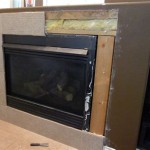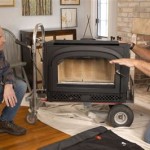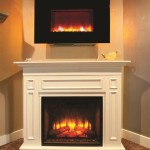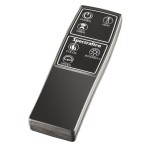Bio Fuel Fireplace Review: A Comprehensive Overview
Bio fuel fireplaces are gaining popularity as an eco-friendly and aesthetically pleasing alternative to traditional wood-burning fireplaces. These fireplaces utilize liquid bioethanol fuel, a renewable resource derived from plant-based materials like corn and sugarcane, which produces minimal emissions when burned. This review aims to provide a comprehensive understanding of bio fuel fireplaces, exploring their benefits, drawbacks, and various considerations for potential buyers.
The market offers a diverse range of bio fuel fireplace designs, from freestanding units to wall-mounted models and inserts for existing fireplaces. Each type caters to different spatial requirements and aesthetic preferences. Consumers are advised to research the available options thoroughly before making a purchase, considering factors such as room size, installation ease, and desired heat output.
Environmental Considerations and Fuel Efficiency
A primary advantage of bio fuel fireplaces lies in their environmental friendliness. Bioethanol fuel burns cleanly, producing primarily carbon dioxide and water vapor. The absence of smoke, soot, and ash eliminates the need for a chimney or venting system, simplifying installation and reducing indoor air pollution. While the carbon dioxide released during combustion is a greenhouse gas, it is generally considered carbon neutral as the plants used to produce the bioethanol absorbed an equivalent amount of carbon dioxide during their growth cycle. However, the overall environmental impact depends on the sustainability of the bioethanol production process, including land use and transportation logistics.
Fuel efficiency varies depending on the fireplace model and the quality of the bioethanol used. Smaller, decorative models typically have lower fuel consumption rates than larger units designed for heating larger spaces. The heat output of a bio fuel fireplace is measured in British Thermal Units (BTUs), and consumers should choose a model with a BTU rating appropriate for the size of the room they intend to heat. It’s crucial to note that bio fuel fireplaces are typically supplemental heating sources and may not be sufficient to warm an entire house during extremely cold weather. Regular monitoring of fuel levels is also necessary to avoid running out of fuel unexpectedly.
Although bio fuel fireplaces are generally considered environmentally friendly, it's imperative to source bioethanol fuel from reputable suppliers who prioritize sustainable agricultural practices. Inquiring about the origin of the fuel and its certification can help ensure that the environmental benefits of using a bio fuel fireplace are fully realized.
Safety Features and Operational Guidelines
Safety is paramount when operating any type of fireplace, and bio fuel fireplaces are no exception. Most models are equipped with safety features such as spill-proof containers and flame extinguishing mechanisms. Users should strictly adhere to the manufacturer's instructions regarding fuel filling, ignition, and extinguishing procedures. Overfilling the fuel reservoir can lead to spills and potential fire hazards. It is essential to use only bioethanol fuel specifically designed for fireplaces, as other types of alcohol may produce harmful fumes or burn improperly. Placing flammable materials near the fireplace is strictly prohibited. Always allow the fireplace to cool down completely before refilling the fuel reservoir.
Adequate ventilation is important when using a bio fuel fireplace, although a chimney is not required. While the emissions are relatively clean, sufficient airflow helps prevent the buildup of carbon dioxide in the room. Opening a window or operating a ventilation fan can ensure proper air circulation. Regular maintenance, including cleaning the burner and surrounding surfaces, helps maintain the fireplace's efficiency and prolong its lifespan. It is also recommended to install a carbon monoxide detector in the vicinity of the fireplace as a precautionary measure, even though bio fuel fireplaces produce minimal carbon monoxide.
The operation of a bio fuel fireplace should always be supervised, especially in households with children or pets. The open flame poses a burn risk, and the fireplace should be placed in a location where it cannot be easily knocked over or accessed by unauthorized individuals. Establishing and enforcing safety protocols is crucial for minimizing the risk of accidents.
Aesthetics, Design, and Maintenance
Beyond their environmental and safety considerations, bio fuel fireplaces offer significant aesthetic advantages. Their ventless design allows for greater flexibility in placement, enabling them to be installed in locations where traditional fireplaces would be impractical. The absence of a chimney creates a clean, minimalist look that complements modern interior design styles. Many bio fuel fireplaces feature sleek and contemporary designs, incorporating materials such as stainless steel, glass, and stone.
The variety of designs available ensures that consumers can find a bio fuel fireplace that matches their personal taste and décor. Wall-mounted models create a dramatic focal point, while freestanding units offer portability and versatility. Tabletop models are ideal for smaller spaces or as decorative accents. Inserts can transform existing masonry fireplaces into modern, eco-friendly features.
Maintaining a bio fuel fireplace is relatively simple compared to wood-burning fireplaces. There is no ash to remove, and the absence of smoke eliminates the need for chimney cleaning. Regular wiping of the exterior surfaces with a damp cloth is usually sufficient to keep the fireplace looking clean and presentable. The burner may require occasional cleaning to remove any residue buildup. Following the manufacturer's maintenance guidelines helps ensure the longevity and optimal performance of the fireplace.

Howarth Bioethanol Fireplace Review U Me And The Kids
:max_bytes(150000):strip_icc()/Ethanol-Fireplace-via-smallspaces.about.com-56a889795f9b58b7d0f3278c.jpg?strip=all)
Using An Ethanol Fireplace In A Small Home

Howarth Black Bioethanol Fireplace

Hampton 5 Bio Stove No Chimney Mess Odour

Best Ethanol Fireplace Review Choose The Right For You Soothing Company

Modern White Cylinder Bioethanol Fire Wood Burning Effect The Stove House

Bredon Bioethanol Fireplace Review A Perfect Blend Of Style And Functionality

What Is The Largest Ethanol Fireplace For Your Room Modern Blaze

Capri Bioethanol Fire Biofires Com Gel Fireplaces Ltd
:max_bytes(150000):strip_icc()/wall_fire-56a8869d5f9b58b7d0f311b0.jpg?strip=all)
Using An Ethanol Fireplace In A Small Home
Related Posts








